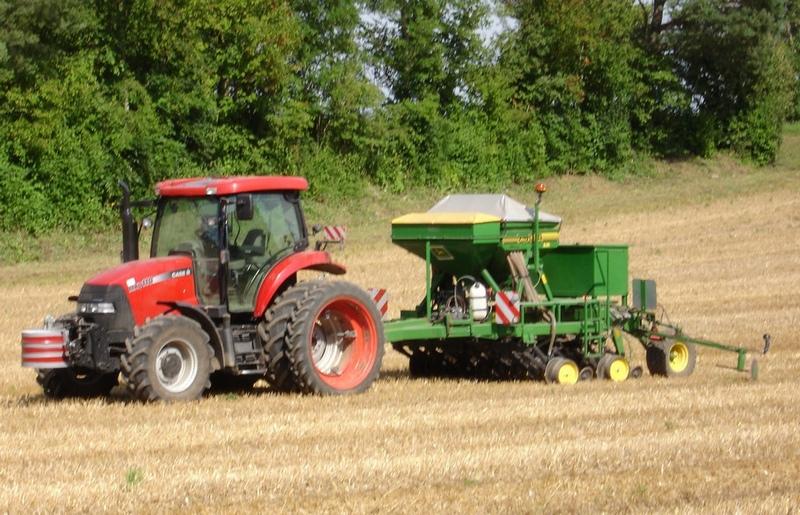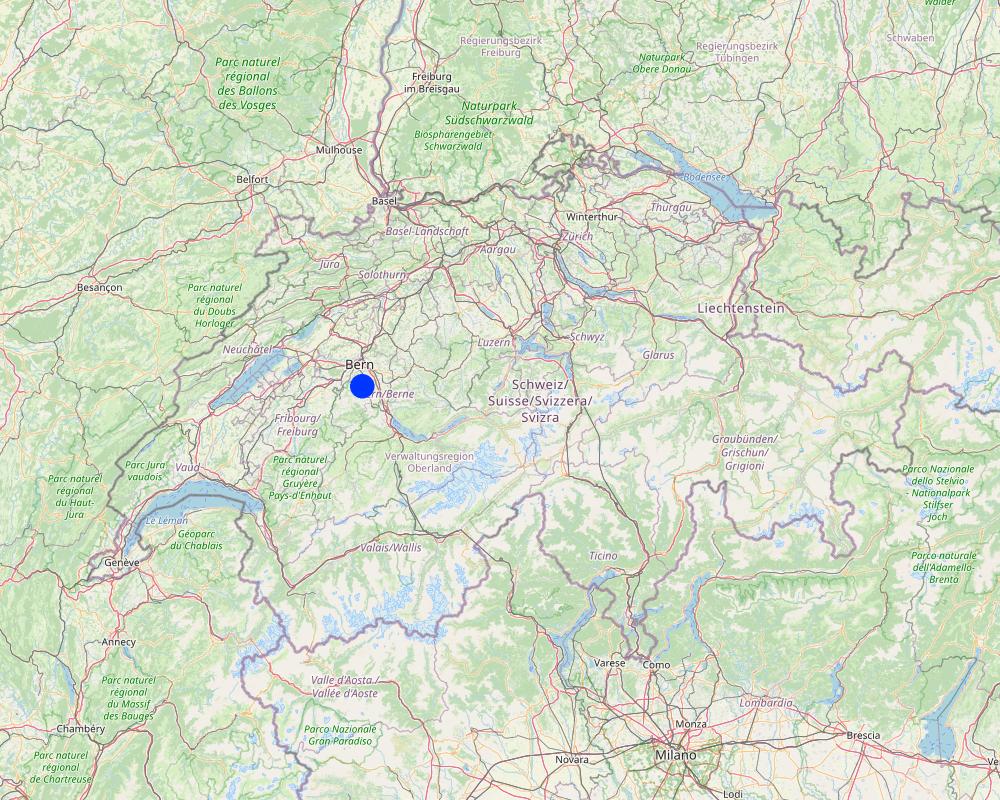Direct seeding [Suiza]
- Creación:
- Actualización:
- Compilador: Unknown User
- Editor: –
- Revisores: Fabian Ottiger, Alexandra Gavilano, Joana Eichenberger
Direktsaat (German)
technologies_1007 - Suiza
Visualizar secciones
Expandir todo Colapsar todos1. Información general
1.2 Detalles de contacto de las personas de referencia e instituciones involucradas en la evaluación y la documentación de la Tecnología
Persona(s) de referencia clave
Especialista MST:
Wyler Roman
Center for Development and Environment, University of Berne
Suiza
usuario de la tierra:
Streit Thomas
Suiza
Nombre del proyecto que financió la documentación/ evaluación de la Tecnología (si fuera relevante)
OPtimal strategies to retAIN and re-use water and nutrients in small agricultural catchments across different soil-climatic regions in Europe (OPTAIN)Nombre de la(s) institución(es) que facilitaron la documentación/ evaluación de la Tecnología (si fuera relevante)
CDE Centre for Development and Environment (CDE Centre for Development and Environment) - Suiza1.3 Condiciones referidas al uso de datos documentados mediante WOCAT
El compilador y la/s persona(s) de referencia claves aceptan las condiciones acerca del uso de los datos documentados mediante WOCAT:
Sí
1.5 Referencia al (los) Cuestionario(s) de Enfoques MST (documentados usando WOCAT)
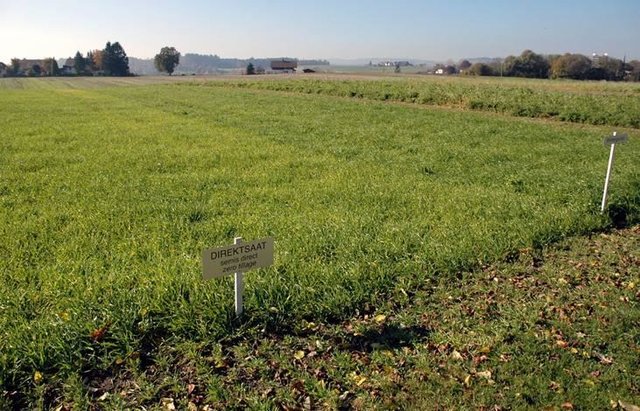
Subsidies for conservation agriculture [Suiza]
Land users commit to apply conservation agriculture on parts of their land for a period of 5 years. In return they get subsidies during this period.
- Compilador: Unknown User
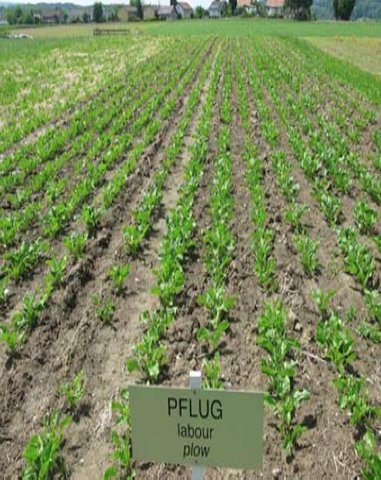
Soil support program for conservation agriculture [Suiza]
Through the soil support program land users get subsidies for applying conservation technologies on their fields during a period of 6 years.
- Compilador: Deborah Niggli
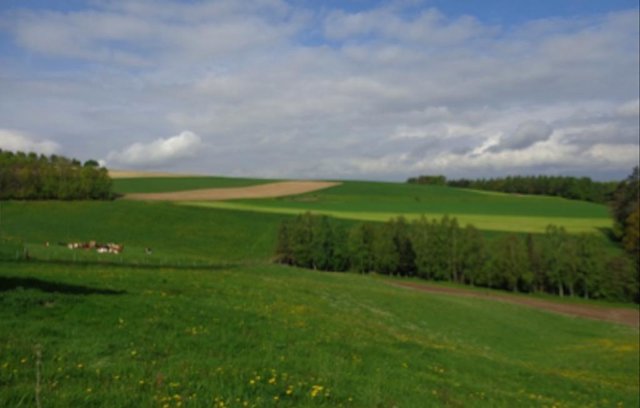
Direktzahlungssystem [Suiza]
Finanzielle Leistungen des Bundes um den Ertragsverlust, den eine Kultur für den Bauern bringt, auszugleichen. Das Direktzahlungssystem führt gewissermassen zu einer 'Vergünstigung des Produkts' für den Konsumenten.
- Compilador: Deborah Niggli
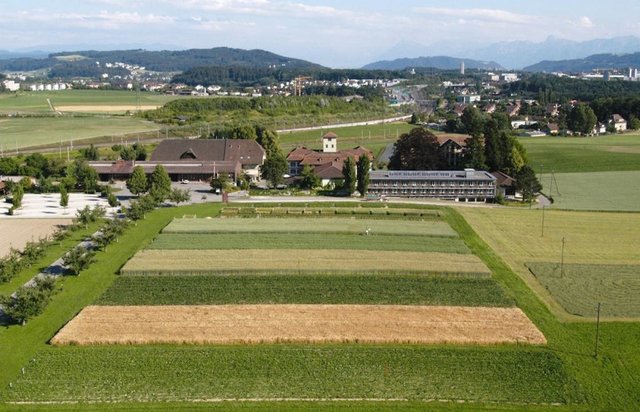
Förderprogramm Boden [Suiza]
Mit dem Förderprogramm Boden des Kantons Bern erhalten beteiligte Landnutzer Direktzahlungen für die Anwendung von bodenkonservierenden Anbauverfahren auf ihren landwirtschaftlichen Feldern. Das Projekt hat eine Dauer von 6 Jahren.
- Compilador: Deborah Niggli
2. Descripción de la Tecnología MST
2.1 Breve descripción de la Tecnología
Definición de la Tecnología:
A cropping system which allows to plant the seeds directly into the soil without ploughing. The soil is covered with plant remainders.
2.2 Descripción detallada de la Tecnología
Descripción:
The farm portaited is located in a hilly area near Bern. It is cooperating with an other farm of the village so that in total 32 ha of arable land are cultivated. All crops except for potatoes and sugar beets are produced within the no-tillage system. So the area cultivated with the no-tillage system is about 26 ha. The farm is producing mainly fodder (maize, wheat) for pigs. Beside this potatoes and sugar beets are produced to be sold. A typical crop rotation consists of a root crop, followed by a winter grain and a green manure. There are major meadows, too.
No-tillage characterizes a cultivation system without ploughing or any other reworking of the soil. After the previous crop (Maize, grain) has been harvested, a total herbicide is applied and the seeds are brought directly into the soil with a special machine. A metal disk carves a narrow slit into the surface. Then the seeds are brought into the soil pneumatically. Finally, the slit is closed again by two wheels pressing on the surface.
The no-tillage system is used to reduce soil degradation, especially erosion. It enables a permanent cover of the soil surface, which reduces sealing and crusting. Since they are not disturbed by ploughing anymore, there are more earthworms in the soil. Their activity can slowly reduce compaction and improve the soil structure. This leads to better infiltration rates and also to a higher water storage capacity. Less water remains on the soil surface, so soil loss can be reduced.
The no-tillage system requires a special direct seeding machine. This machine is very expensive, so most farmers don’t buy it on their own but task a contractor with the seeding. On the other hand, certain machines from conventional agriculture are not needed anymore (plough, harrow, rotary tiller etc.). Furthermore, working hours and fuel can be saved. In some cantons of switzerland no-tillage agriculture is also subsidised. For this reason, the method holds economic advantages, too.
In the beginning crop yield may be reduced by up to 10%. The rebuilding of the soil structure requires a certain time, depending on the state of the soil at the time of transition. However, this was not the case for the farm portaited here: Already in the first year there were very good crop yields, although the probability for crop loss is higher in the no-tillage system. Competition between the crops and weeds can be too strong if the total herbicide is applied under wet conditions. In addition drying of the soil in spring is often delayed. Thus the plants may face too wet conditions.
2.3 Fotografías de la Tecnología
2.5 País/ región/ lugares donde la Tecnología fue aplicada y que se hallan comprendidos por esta evaluación
País:
Suiza
Región/ Estado/ Provincia:
Gemeinde Wald
Especifique más el lugar :
Kanton Bern
Comentarios:
The farm owns 0.27 km2. For reasons of rationalization it is working together with another farm. Together they have 0.32 km2. On 0.26 km2 direct seeding is applied.
Total area covered by the SLM Technology is 0.26 km2.
Map
×2.6 Fecha de la implementación
Si no se conoce el año preciso, indique la fecha aproximada:
- 10-50 años atrás
2.7 Introducción de la Tecnología
Especifique cómo se introdujo la Tecnología:
- durante experimentos/ investigación
Comentarios (tipo de proyecto, etc.):
modern direct seeding was developed since the 1950s after the development of modern herbicides.
3. Clasificación de la Tecnología MST
3.2 Tipo(s) actuales de uso de la tierra donde se aplica la Tecnología

Tierras cultivadas
- Cosecha anual
Cosechas anuales - Especifique cultivos:
- cultivos para forraje - pastos
Número de temporadas de cultivo por año:
- 2
Especifique:
Longest growing period in days: 230Longest growing period from month to month: Mar - OctSecond longest growing period in days: 300Second longest growing period from month to month: Nov - Aug
Comentarios:
Major land use problems (land users’ perception): Soil erosion, soil compaction at different dephts
Future (final) land use (after implementation of SLM Technology): Cropland: Ca: Annual cropping
3.4 Provisión de agua
Provisión de agua para la tierra donde se aplica la Tecnología:
- de secano
3.5 Grupo MST al que pertenece la Tecnología
- perturbación mínima del suelo
3.6 Medidas MST que componen la Tecnología
3.7 Principales tipos de degradación de la tierra encarados con la Tecnología

erosión de suelos por agua
- Wt: pérdida de capa arable/ erosión de la superficie

deterioro físico del suelo
- Pc: compactación

degradación biológica
- Bc: reducción de la cobertura vegetal del suelo
- Bl: pérdida de la vida del suelo
Comentarios:
Main type of degradation addressed: Wt: loss of topsoil / surface erosion, Bc: reduction of vegetation cover, Bl: loss of soil life
Secondary types of degradation addressed: Pc: compaction
Main causes of degradation: crop management (annual, perennial, tree/shrub) (unprotected soil surface in conventional agriculture), Heavy / extreme rainfall (intensity/amounts), education, access to knowledge and support services (Tradition. In general ploughing is not questioned.)
3.8 Prevención, reducción o restauración de la degradación de la tierra
Especifique la meta de la Tecnología con relación a la degradación de la tierra:
- prevenir la degradación de la tierra
- reducir la degradación de la tierra
Comentarios:
Main goals: prevention of land degradation
Secondary goals: mitigation / reduction of land degradation
4. Especificaciones técnicas, actividades de implementación, insumos y costos
4.1 Dibujo técnico de la Tecnología
Especificaciones técnicas (relacionadas al dibujo técnico):
Technical knowledge required for field staff / advisors: high (the correct timing of activities is difficult to achieve. The current weather situation has a great influence.)
Technical knowledge required for land users: high (crop rotation needs to be adjusted)
Main technical functions: control of raindrop splash, improvement of ground cover, improvement of surface structure (crusting, sealing)
Secondary technical functions: improvement of topsoil structure (compaction), improvement of subsoil structure (hardpan), stabilisation of soil (eg by tree roots against land slides), increase in organic matter, increase of infiltration, increase / maintain water stored in soil
Better crop cover
Remarks: precedent crop remains on the soil
Retaining more vegetation cover
Remarks: precedent crop remains on the soilprecedent crop remains on the soil
Green manure
Remarks: no change compared to conventional agriculture
Manure / compost / residues
Material/ species: liquid pig manure
Remarks: no change compared to conventional agriculture
Mineral (inorganic) fertilizers
Remarks: no change compared to conventional agriculture
Rotations / fallows
Remarks: new crop rotation is needed
Zero tillage / no-till
Remarks: all crops except potatoes and sugar beets, where mulching is applied
4.2 Información general sobre el cálculo de insumos y costos
otra / moneda nacional (especifique):
Swiss Franc
Si fuera relevante, indique la tasa de cambio de dólares americanos a la moneda local (ej. 1 U$ = 79.9 Reales Brasileros): 1 U$ =:
1,08
4.3 Actividades de establecimiento
| Actividad | Momento (estación) | |
|---|---|---|
| 1. | Buy a direct seeding machine |
4.4 Costos e insumos necesarios para el establecimiento
| Especifique insumo | Unidad | Cantidad | Costos por unidad | Costos totales por insumo | % de los costos cubiertos por los usuarios de las tierras | |
|---|---|---|---|---|---|---|
| Equipo | Direct seeding machine | Machine | 1,0 | 278000,0 | 278000,0 | 100,0 |
| Costos totales para establecer la Tecnología | 278000,0 | |||||
| Costos totales para establecer la Tecnología en USD | 257407,41 | |||||
Comentarios:
Duration of establishment phase: 0 month(s)
4.5 Actividades de establecimiento/ recurrentes
| Actividad | Momento/ frequencia | |
|---|---|---|
| 1. | Appliance of total herbicide (glyphosat) | 1 per growing period |
| 2. | Seeding | 1 per growing period |
| 3. | spreading of snail poison | 1-3 per growing period |
4.6 Costos e insumos necesarios para actividades de mantenimiento/ recurrentes (por año)
| Especifique insumo | Unidad | Cantidad | Costos por unidad | Costos totales por insumo | % de los costos cubiertos por los usuarios de las tierras | |
|---|---|---|---|---|---|---|
| Mano de obra | Seeding | ha | 1,0 | 185,0 | 185,0 | 100,0 |
| Mano de obra | Spreading of snail poison | ha | 1,0 | 46,0 | 46,0 | 100,0 |
| Fertilizantes y biocidas | Biocides | ha | 1,0 | 56,0 | 56,0 | 100,0 |
| Otros | Appliance of herbicide | ha | 1,0 | 93,0 | 93,0 | 100,0 |
| Indique los costos totales para mantenecer la Tecnología | 380,0 | |||||
| Costos totales para mantener la Tecnología en USD | 351,85 | |||||
Comentarios:
New direct seeding machines usually cost $45'000. The farmer portraited bought a second hand machine for $27800. To calculate the costs it was assumed that all work is outsorced to a contracter (which is not usually the case). One growing period per year was assumed, in reality it 1-2. Worksteps which are the same in direct seeding and conventional agriculture were not included. The following worksteps are additional to conventional agriculture (working hours, costs): Appliance of total herbicide ((0.75h, $149), direct seeding (0.5h, $185), spreading of snail poison (0.5h, $83). The following steps are not needed anymore: ploughing (2.5h, $260), harrowing (1.25h, $185), conventional seeding (1h, $102). So in total about 3.75h and $130 can be saved per ha and growing period. Besides this, direct seeding is subsidised in the Canton Bern. The subsidies sum up to $250-$500 per ha and year for a period of 5 years. These subsidies are an important reason for the growing popularity of conservation agriculture in Switzerland. The most important income source for Swiss farmers are direct subsidies, which are about $1400 per ha and year. To get these subsidies, farmers have to fulfill ecological criteria.
4.7 Factores más determinantes que afectan los costos:
Describa los factores más determinantes que afectan los costos:
The most important factor is whether a direct seeding machine can be rented in locally, because this represents a major investment.
5. Entorno natural y humano
5.1 Clima
Lluvia anual
- < 250 mm
- 251-500 mm
- 501-750 mm
- 751-1,000 mm
- 1,001-1,500 mm
- 1,501-2,000 mm
- 2,001-3,000 mm
- 3,001-4,000 mm
- > 4,000 mm
Especificaciones/ comentarios sobre la cantidad de lluvia:
precipitation during the whole year. The maximum lies in summer.
Zona agroclimática
- Sub-húmeda
Thermal climate class: temperate
5.2 Topografía
Pendientes en promedio:
- plana (0-2 %)
- ligera (3-5%)
- moderada (6-10%)
- ondulada (11-15%)
- accidentada (16-30%)
- empinada (31-60%)
- muy empinada (>60%)
Formaciones telúricas:
- meseta/ planicies
- cordilleras
- laderas montañosas
- laderas de cerro
- pies de monte
- fondo del valle
Zona altitudinal:
- 0-100 m s.n.m.
- 101-500 m s.n.m.
- 501-1,000 m s.n.m
- 1,001-1,500 m s.n.m
- 1,501-2,000 m s.n.m
- 2,001-2,500 m s.n.m
- 2,501-3,000 m s.n.m
- 3,001-4,000 m s.n.m
- > 4,000 m s.n.m
5.3 Suelos
Profundidad promedio del suelo:
- muy superficial (0-20 cm)
- superficial (21-50 cm)
- moderadamente profunda (51-80 cm)
- profunda (81-120 cm)
- muy profunda (>120 cm)
Textura del suelo (capa arable):
- mediana (limosa)
Materia orgánica de capa arable:
- elevada (>3%)
- media (1-3%)
Si se halla disponible, adjunte una descripción completa de los suelos o especifique la información disponible, por ej., tipo de suelo, pH/ acidez de suelo, capacidad de intercambio catiónico, nitrógeno, salinidad, etc. :
Soil texture is medium (loamy/silty and sandy)
Soil fertility is high
Soil drainage/infiltration is good
Soil water storage capacity is high
5.4 Disponibilidad y calidad de agua
Agua subterránea:
5-50 m
Calidad de agua (sin tratar):
agua potable de buena calidad
Comentarios y especificaciones adicionales sobre calidad y cantidad de agua:
Availability of surface water: good, medium
5.5 Biodiversidad
Diversidad de especies:
- mediana
5.6 Las características de los usuarios de la tierra que aplican la Tecnología
Orientación del mercado del sistema de producción:
- comercial/ mercado
Ingresos no agrarios:
- menos del 10% de todos los ingresos
Nivel relativo de riqueza:
- promedio
Individuos o grupos:
- individual/ doméstico
Nivel de mecanización:
- mecanizado/motorizado
Género:
- hombres
Indique otras características relevantes de los usuarios de las tierras:
Land users applying the Technology are mainly common / average land users
Difference in the involvement of women and men: In Switzerland there are mostly men who apply the technology. However, the decision making usually takes place at the household level, including both men and women.
Population density: 50-100 persons/km2
Annual population growth: negative
Off-farm income specification: Many farmers in Switzerland have significant off farm income. But this seems to be independent of the technology applied.
5.7 Área promedio de la tierra usada por usuarios de tierra que aplican la Tecnología
- < 0.5 ha
- 0.5-1 ha
- 1-2 ha
- 2-5 ha
- 5-15 ha
- 15-50 ha
- 50-100 ha
- 100-500 ha
- 500-1,000 ha
- 1,000-10,000 ha
- > 10,000 ha
¿Esto se considera de pequeña, mediana o gran escala (refiriéndose al contexto local)?
- escala mediana
5.8 Tenencia de tierra, uso de tierra y derechos de uso de agua
Tenencia de tierra:
- individual, con título
Derechos de uso de tierra:
- arrendamiento
- individual
Derechos de uso de agua:
- comunitarios (organizado)
Comentarios:
Population growth in Switzerland is about 0.6% per year. In the commune discussed here it's about -0.6%.
5.9 Acceso a servicios e infraestructura
salud:
- pobre
- moderado
- bueno
educación:
- pobre
- moderado
- bueno
asistencia técnica:
- pobre
- moderado
- bueno
empleo (ej. fuera de la granja):
- pobre
- moderado
- bueno
mercados:
- pobre
- moderado
- bueno
energía:
- pobre
- moderado
- bueno
caminos y transporte:
- pobre
- moderado
- bueno
agua potable y saneamiento:
- pobre
- moderado
- bueno
servicios financieros:
- pobre
- moderado
- bueno
6. Impactos y comentarios para concluir
6.1 Impactos in situ demostrados por la Tecnología
Impactos socioeconómicos
Producción
producción de cultivo
Comentarios/ especifique:
not in general, but can occur in the beginning
producción de forraje
riesgo de fracaso de producción
Comentarios/ especifique:
reduced risk for production failure due to erosion but the technology is sensitive to wet conditions in spring. Risk of crop failure due to snails is enhanced
Disponibilidad y calidad de agua
demanda de agua para irrigar
Comentarios/ especifique:
irrelevant in the area
Ingreso y costos
gastos en insumos agrícolas
Comentarios/ especifique:
no reworking of the soil but major initial investment if no direct seeding machine is available for rent.
ingreso agrario
Comentarios/ especifique:
due to reduced expenses
carga de trabajo
Comentarios/ especifique:
no reworking of the soil
Impactos socioculturales
oportunidades culturales
Comentarios/ especifique:
ploughing is a major part of rural identity. Farmer become more dependent on others if work is outsourced to contractors.
Impactos ecológicos
Ciclo de agua/ escurrimiento de sedimento
escurrimiento superficial
Suelo
humedad del suelo
cubierta del suelo
pérdida de suelo
encostramiento/ sellado de suelo
compactación de suelo
materia orgánica debajo del suelo C
Biodiversidad: vegetación, animales
especies benéficas
Otros impactos ecológicos
Hazard towards adverse events
Comentarios/ especifique:
better soil cover leads to higher tolerance against intense rain. Increased soil moisture leads to higher tolerance against droughts
6.2 Impactos fuera del sitio demostrados por la Tecnología
daño a campos de vecinos
Comentarios/ especifique:
erosion is almost negligible
daños a infraestructura pública / privada
6.3 Exposición y sensibilidad de la Tecnología al cambio climático gradual y a extremos relacionados al clima/ desastres (desde la percepción de los usuarios de tierras)
Cambio climático gradual
Cambio climático gradual
| Estación | Incremento o reducción | ¿Cómo es que la tecnología soporta esto? | |
|---|---|---|---|
| temperatura anual | incrementó | no se sabe |
Extremos (desastres) relacionados al clima
Desastres climatológicos:
| ¿Cómo es que la tecnología soporta esto? | |
|---|---|
| tormenta de lluvia local | bien |
| tormenta de viento | no se sabe |
Desastres climatológicos
| ¿Cómo es que la tecnología soporta esto? | |
|---|---|
| sequía | bien |
Desastres hidrológicos
| ¿Cómo es que la tecnología soporta esto? | |
|---|---|
| inundación general (río) | no se sabe |
Otras consecuencias relacionadas al clima
Otras consecuencias relacionadas al clima
| ¿Cómo es que la tecnología soporta esto? | |
|---|---|
| periodo reducido de crecimiento | no muy bien |
6.4 Análisis costo-beneficio
¿Cómo se comparan los beneficios con los costos de establecimiento (desde la perspectiva de los usuarios de tierra)?
Ingresos a corto plazo:
negativo
¿Cómo se comparan los beneficios con los costos de mantenimiento/ recurrentes (desde la perspectiva de los usuarios de tierra)?
Ingresos a corto plazo:
positivo
Comentarios:
In this case study, the farmer bought a direct seeding machine on his own. This is why short-term returns are negative.
6.5 Adopción de la Tecnología
De todos quienes adoptaron la Tecnología, ¿cuántos lo hicieron espontáneamente, por ej. sin recibir nada de incentivos/ materiales:
- 11-50%
Comentarios:
80% of land user families have adopted the Technology with external material support
Comments on acceptance with external material support: There is the possibility to get subsidies during the first 5 years of appliance. But resources are limited and therefore not everybody gets them.
20% of land user families have adopted the Technology without any external material support
There is a moderate trend towards spontaneous adoption of the Technology
Comments on adoption trend: The total area of conservation agriculture is small in Switzerland. But growing rates are quite high.
6.7 Fuerzas/ ventajas/ oportunidades de la Tecnología
| Fuerzas/ ventajas/ oportunidades desde la perspectiva del usuario de la tierra |
|---|
|
Soil erosion is greatly reduced. How can they be sustained / enhanced? For crops which are not tolerant to direct seeding, other soil conservation techniques should be applied. |
|
The risk of soil compaction is reduced. How can they be sustained / enhanced? Heavy machinery should only be used under dry conditions. |
|
Soil structure is improved due to more earthworms. How can they be sustained / enhanced? Enough organic material needs to be available. |
|
Working hours and fuel consumption is highly reduced, since no reworking of the soil is needed anymore. How can they be sustained / enhanced? The time saved should be used to enhance production. |
6.8 Debilidades/ desventajas/ riesgos de la Tecnología y formas de sobreponerse a ellos
| Debilidades/ desventajas/ riesgos desde la perspectiva del usuario de la tierra | ¿Cómo sobreponerse a ellas? |
|---|---|
| Direct seeding machines are very expensive and the second hand market is not well developed yet. | Contractors can be tasked with the seeding or the investments can be shared. |
| The risk of crop failure is enhanced. | Very good planning of crop rotation. The date of sowings should be chosen carefully. Crops should be checked for snails regularly. |
| Debilidades/ desventajas/ riesgos desde la perspectiva del compilador o de otra persona de referencia clave | ¿Cómo sobreponerse a ellas? |
|---|---|
| Worldwide application of glyphosate could possibly lead to resistant weeds. | With an adequate crop rotation and good timing of the worksteps glyphosate is not needed sometimes. |
| The public is very sensitive towards the application of chemical substances. In contrast, the broader public is not familiar with the advantages of conservation agriculture. | Scientific knowledge should be adressed to a broader public. |
7. Referencias y vínculos
7.1 Métodos/ fuentes de información
7.2 Vínculos a las publicaciones disponibles
Título, autor, año, ISBN:
Wirz Handbuch. Betrieb und Familie. Für das landwirtschaftliche Unternehmen. LBL Lindau. 112 Jahrgang. Wirz Verlag Basel.2006.
¿Dónde se halla disponible? ¿Costo?
Tel: +41 61 264 64 50CHF 22.-
7.3 Vínculos a la información relevante disponible en línea
Título/ descripción:
Sturny et al. Direktsaat und Pflug im Systemvergleich – Eine Synthese. AGRARForschung 14 (8): 332-337. 2007.
URL:
http://www.vol.be.ch/site/lanat-3155-syntheseartikel.pdf
Vínculos y módulos
Expandir todo Colapsar todosVínculos

Subsidies for conservation agriculture [Suiza]
Land users commit to apply conservation agriculture on parts of their land for a period of 5 years. In return they get subsidies during this period.
- Compilador: Unknown User

Soil support program for conservation agriculture [Suiza]
Through the soil support program land users get subsidies for applying conservation technologies on their fields during a period of 6 years.
- Compilador: Deborah Niggli

Direktzahlungssystem [Suiza]
Finanzielle Leistungen des Bundes um den Ertragsverlust, den eine Kultur für den Bauern bringt, auszugleichen. Das Direktzahlungssystem führt gewissermassen zu einer 'Vergünstigung des Produkts' für den Konsumenten.
- Compilador: Deborah Niggli

Förderprogramm Boden [Suiza]
Mit dem Förderprogramm Boden des Kantons Bern erhalten beteiligte Landnutzer Direktzahlungen für die Anwendung von bodenkonservierenden Anbauverfahren auf ihren landwirtschaftlichen Feldern. Das Projekt hat eine Dauer von 6 Jahren.
- Compilador: Deborah Niggli
Módulos
No se hallaron módulos


